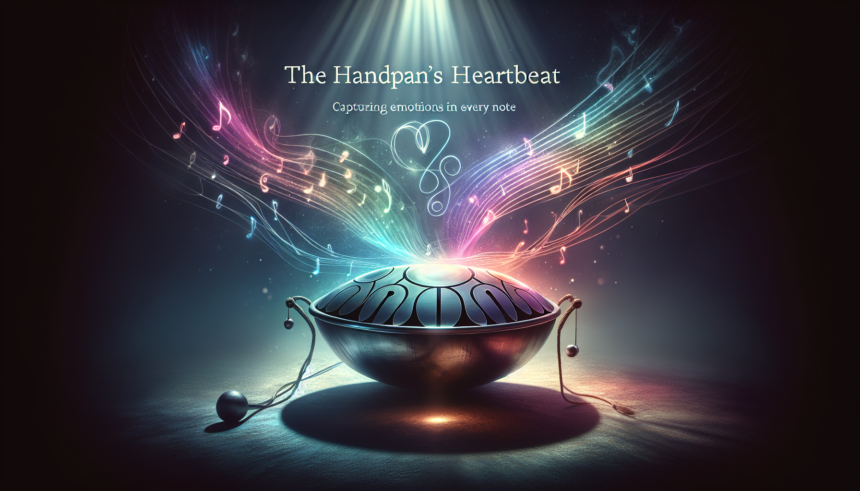The handpan is no ordinary instrument. Its serene tones and unique design captivate musicians and listeners alike. As a steel percussion instrument, the handpan has a shape reminiscent of a UFO, but its legacy and influence stretch far beyond its futuristic appearance. With a history only dating back to the year 2000, when it was created by PanArt in Switzerland, its entrancing sound and emotional depth have quickly earned it a place in the hearts of many.
The magic of the handpan lies in its ability to evoke deep emotions with every note. Unlike traditional drums or string instruments, the handpan produces a harmonic, bell-like sound that resonates deeply within the soul. This distinct tonality creates an intimate connection between the performer and the audience, making each performance an emotional journey.
One of the key elements that contribute to the handpan’s unique ability to capture emotions is its tuning. Traditional handpans are generally tuned to a single scale, such as D minor, enabling musicians to explore a vast range of melodies and harmonies within that scale. Each note on the handpan complements the others, creating a harmonious, meditative soundscape that evokes a sense of tranquility and introspection.
The physical interaction between the player and the handpan also plays a crucial role in the emotional depth of the music. The instrument is played with the hands and fingers, allowing for a wide variety of expressive techniques. Musicians can create gentle, soothing tones by softly tapping the surface, or generate more intense, percussive sounds by striking the steel with greater force. This versatility enables players to convey a broad spectrum of emotions, from serenity to excitement, intimacy to exuberance.
Another factor that enhances the emotional resonance of the handpan is its timbre, or tone color. The handpan’s unique shape and construction produce a warm, rich sound that is both powerful and delicate. This distinct timbre allows musicians to evoke a wide range of emotions, from the comforting warmth of a lullaby to the haunting sorrow of a lament.
In addition to its tonal qualities, the handpan’s physical design also contributes to its emotional impact. The instrument’s round, convex shape and central note (referred to as the “ding”) create a sense of unity and balance. This symmetry is mirrored in the circular arrangement of the other notes around the ding, which encourages a fluid, holistic approach to playing. This design fosters a meditative, almost hypnotic atmosphere that draws listeners into the music and allows them to fully experience the emotions being conveyed.
The handpan’s ability to capture emotions is not limited to its tonal and physical characteristics. The context in which the instrument is played also plays a significant role in the emotional experience. Handpan performances often take place in intimate, introspective settings, such as small gatherings, yoga sessions, or meditative retreats. These environments create a sense of closeness and vulnerability, allowing both the performer and the audience to connect deeply with the music.
The emotional power of the handpan transcends cultural and linguistic barriers. Its universal appeal is rooted in the fundamental human need for connection and self-expression. Handpan music has the ability to reach across cultural divides and communicate emotions that words often cannot. This universality makes the handpan a powerful tool for fostering empathy and understanding between people of different backgrounds.
Many handpan players find that the instrument serves as a form of emotional release and healing. The act of playing the handpan can be deeply therapeutic, allowing musicians to process and express their feelings in a healthy and constructive way. This emotional catharsis can have a profound impact on both the performer and the listener, fostering a sense of connection, empathy, and mutual understanding.
One of the reasons the handpan is so effective at conveying emotions is its capacity for improvisation. Unlike many traditional instruments, which rely on structured compositions and sheet music, the handpan encourages a more spontaneous, intuitive approach to playing. This improvisational quality allows musicians to tap into their emotions in the moment, creating a genuine, raw, and authentic musical experience.
The growing popularity of handpan circles and gatherings also speaks to the instrument’s emotional resonance. These events bring together handpan enthusiasts from around the world to share their love of the instrument and connect through music. The sense of community and shared experience at these gatherings fosters a deep emotional bond among participants, further highlighting the handpan’s unique ability to capture and convey emotions.
As the handpan continues to gain popularity, it is increasingly being used in a variety of settings beyond traditional musical performances. Its soothing, meditative qualities make it an ideal accompaniment for yoga classes, meditation sessions, and therapeutic practices. The emotional depth and versatility of the handpan make it a powerful tool for enhancing mindfulness and promoting emotional well-being.
The rise of social media has also played a significant role in spreading the emotional power of the handpan. Platforms such as YouTube and Instagram allow musicians to share their performances with a global audience, creating a virtual community of handpan enthusiasts. These platforms have enabled the instrument to reach new heights of popularity, as more and more people discover the profound emotional impact of handpan music.
Despite its relatively recent creation, the handpan has already made a lasting impact on the world of music and beyond. Its unique ability to capture and convey emotions has earned it a devoted following of musicians and listeners who are drawn to its soothing, meditative qualities. As the instrument continues to evolve and grow in popularity, it is likely that the emotional depth and versatility of the handpan will continue to resonate with people for generations to come.





